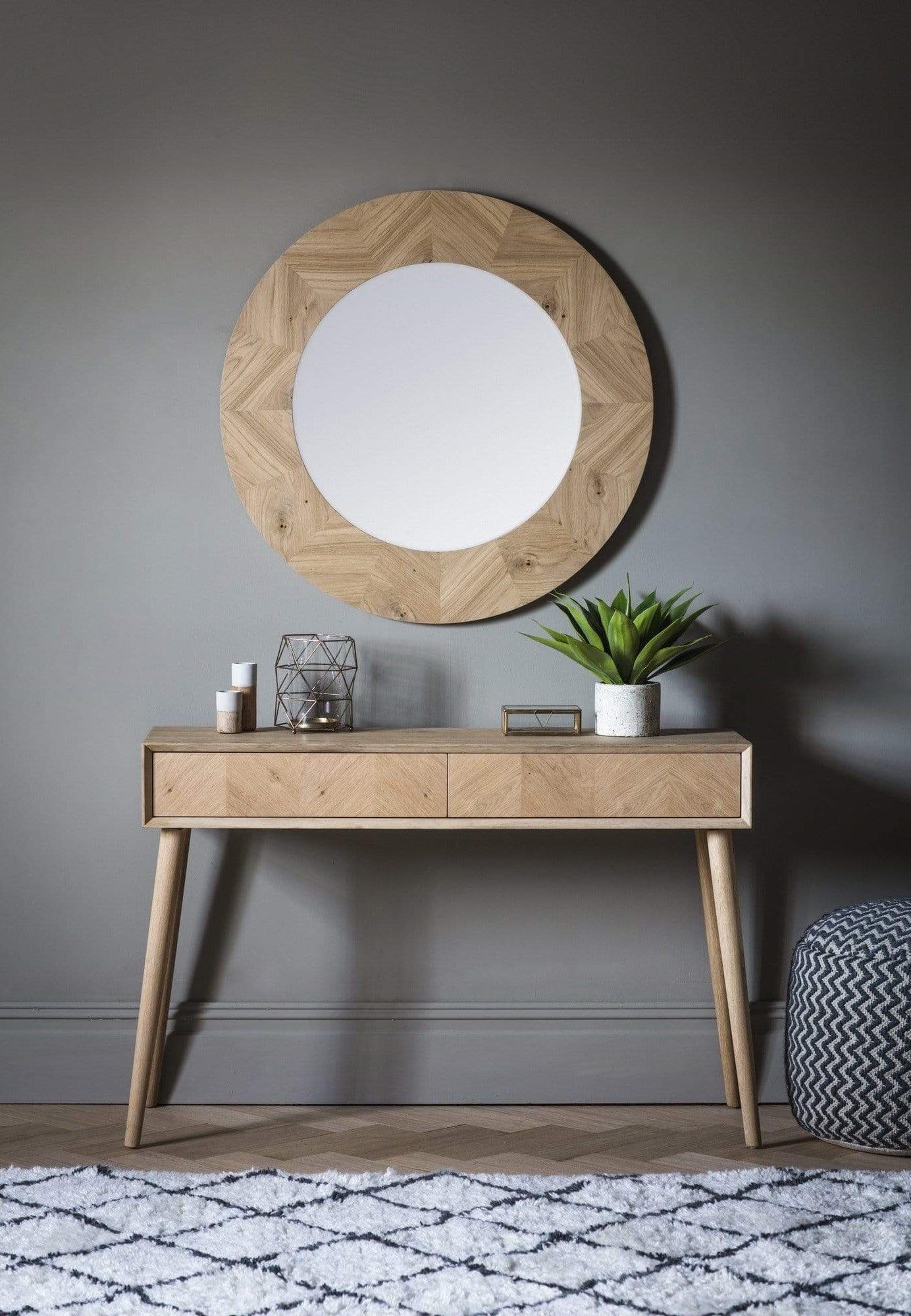
How to Choose a Console Table: A Guide for Your Home
How Console Tables Have Evolved Over Time
Console tables, with their slender profiles and elegant designs, have adorned homes for centuries, evolving in function and form. Originating from classical architecture, these console tables were initially ornamental fixtures, often bracketed to walls and showcasing art or decorative items. However, today, when someone asks, “How to choose a console table?” the answer spans beyond mere aesthetics. They serve as essential pieces in homes, blending utility with design, and capable of transforming spaces from bland hallways to captivating entryways.
The modern console table bridges the gap between functionality and art. Whether it’s a sleek glass console table in a contemporary setting or a rustic wooden console table echoing traditional charm, these pieces have become synonymous with style and practicality. This comprehensive guide will illuminate the myriad facets of console tables, offering insights and expert advice, ensuring you find that perfect console table for your home. Explore the world of console tables with us, from types and materials to styling tips and maintenance, and discover how to choose a console table that can enhance your living spaces.
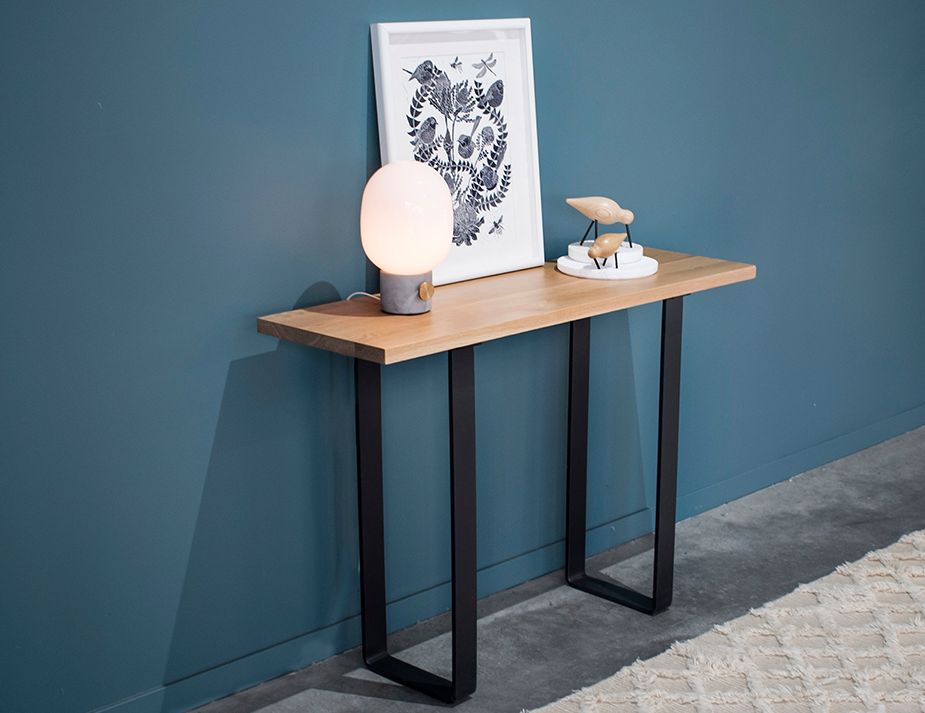
Purpose and Versatility of Console Tables
The charm of console tables lies in their dual nature: they are both functional furniture and aesthetic statements. But what exactly drives people to invest in them? Let’s delve into their multifaceted purposes.
Aesthetic Accent: The primary allure of console tables often rests in their design. From a modern console table’s clean lines to a vintage wooden piece’s intricate details, they serve as eye-catching additions to any room, be it the living area, hallway, or bedroom.
Functional Utility: Beyond the aesthetics, console tables excel in utility. Their narrow structure fits snugly in tight spaces, making them especially valuable for homes short on space. Their surfaces house anything from keys in the entryway, and books in the living room, to accessories in the bedroom.
Adaptable Workspaces: In our ever-evolving world, adaptability is key. The question often arises, “Can you use a console table as a desk?” Given their streamlined design, they can indeed serve as convenient work or study spots, especially in compact apartments.
Display Platforms: Whether it’s cherished family photos, decorative vases, or art pieces, console tables offer the perfect platform to showcase them. They allow homeowners to infuse personal touches into their spaces, telling stories through displayed artifacts.
Storage Solutions: Many console tables come equipped with drawers or shelves, offering practical storage solutions. Be it a cluttered entryway or a living room in need of organisation, these tables can be the answer.
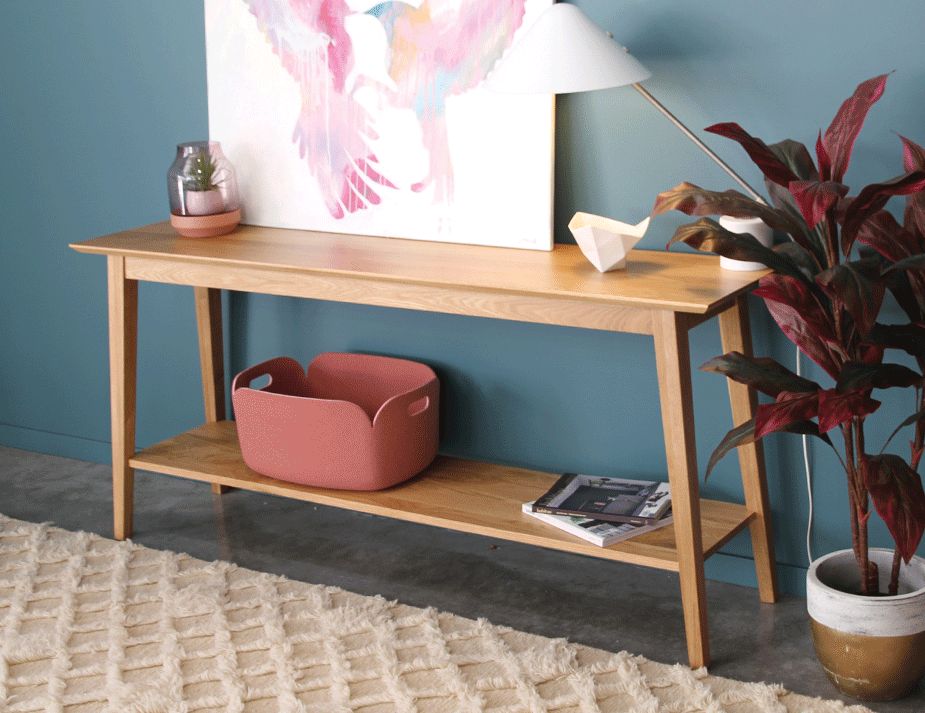
How to Choose the Right Console Table Style to Match Your Aesthetic
Console tables, with their deep-rooted history, have seen a myriad of designs over the years. Their styles have adapted to the changing tides of interior design, reflecting the era’s predominant design sensibilities. Here’s a breakdown of some popular types to help guide your choice:
Traditional Console Tables
Steeped in history and characterized by intricate designs, traditional console tables evoke a sense of timeless elegance. Crafted from rich woods like mahogany or oak, they often feature ornate carvings, classic turned legs, and antique finishes. These tables effortlessly add a touch of grandeur to homes, reminiscent of classic European interiors.
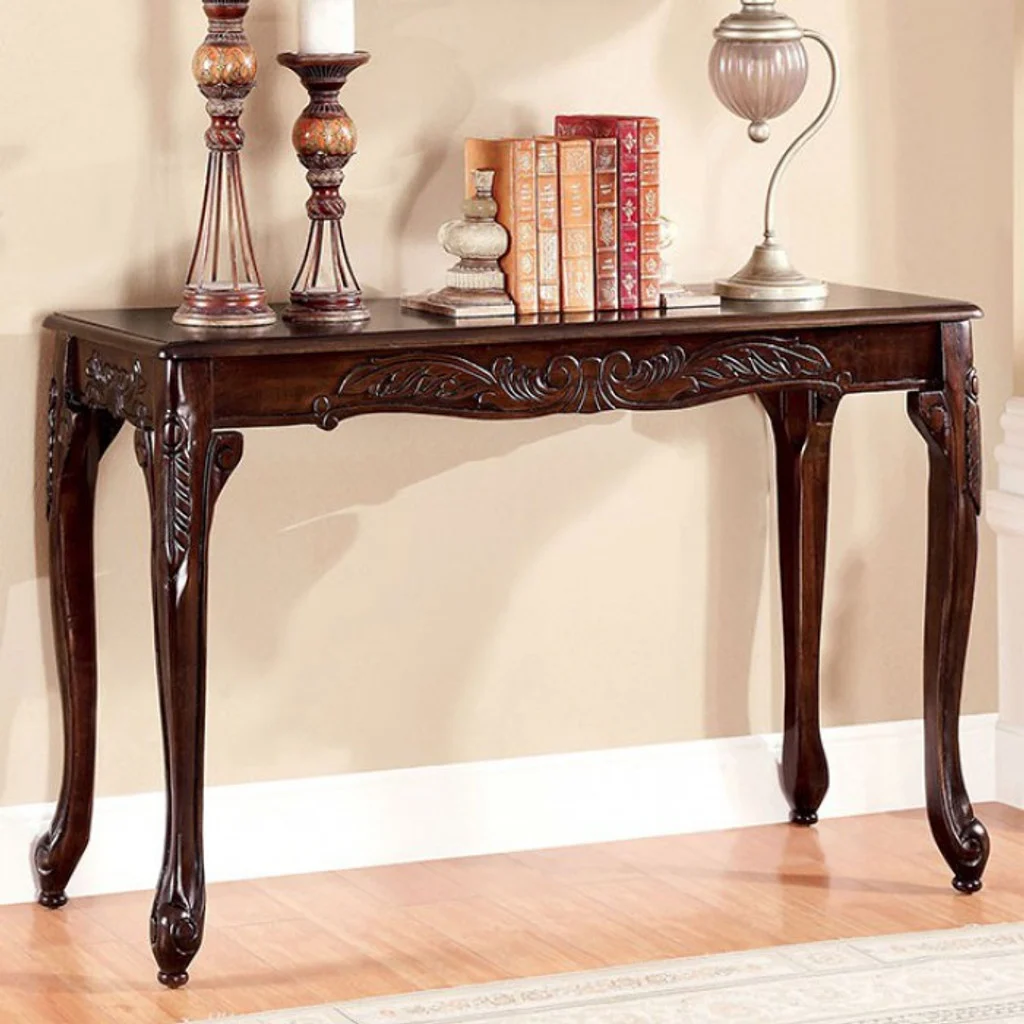
Modern Console Tables
Clean lines, sleek surfaces, and a penchant for minimalism define modern console tables. They often incorporate materials like glass, metal, or polished wood, exuding an air of sophistication. Perfect for contemporary homes, they embody simplicity while making a striking statement.
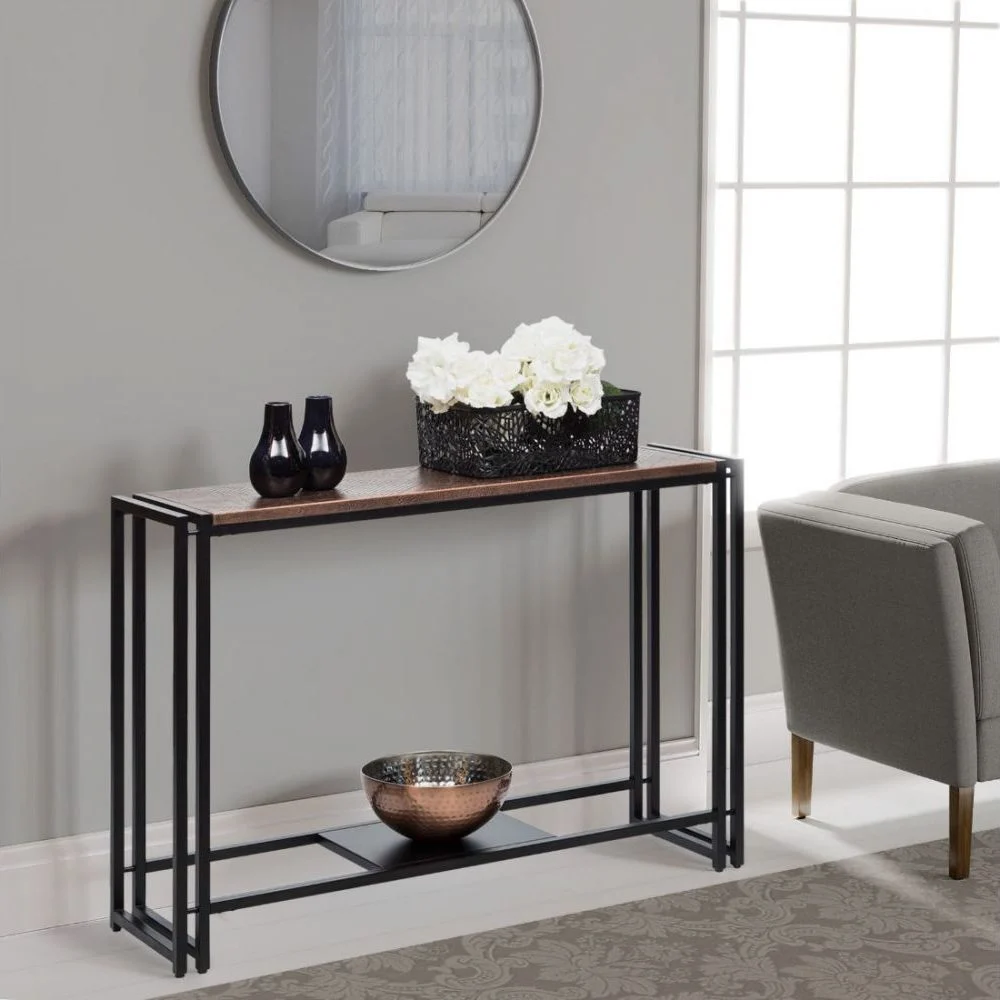
Industrial Console Tables
Raw, rugged, and reminiscent of warehouse lofts, industrial console tables capture the essence of the urban landscape. They blend materials like weathered wood with metal fixtures, resulting in a bold yet functional piece. Their sturdy design is perfect for homes aiming for an edgy, urban vibe.
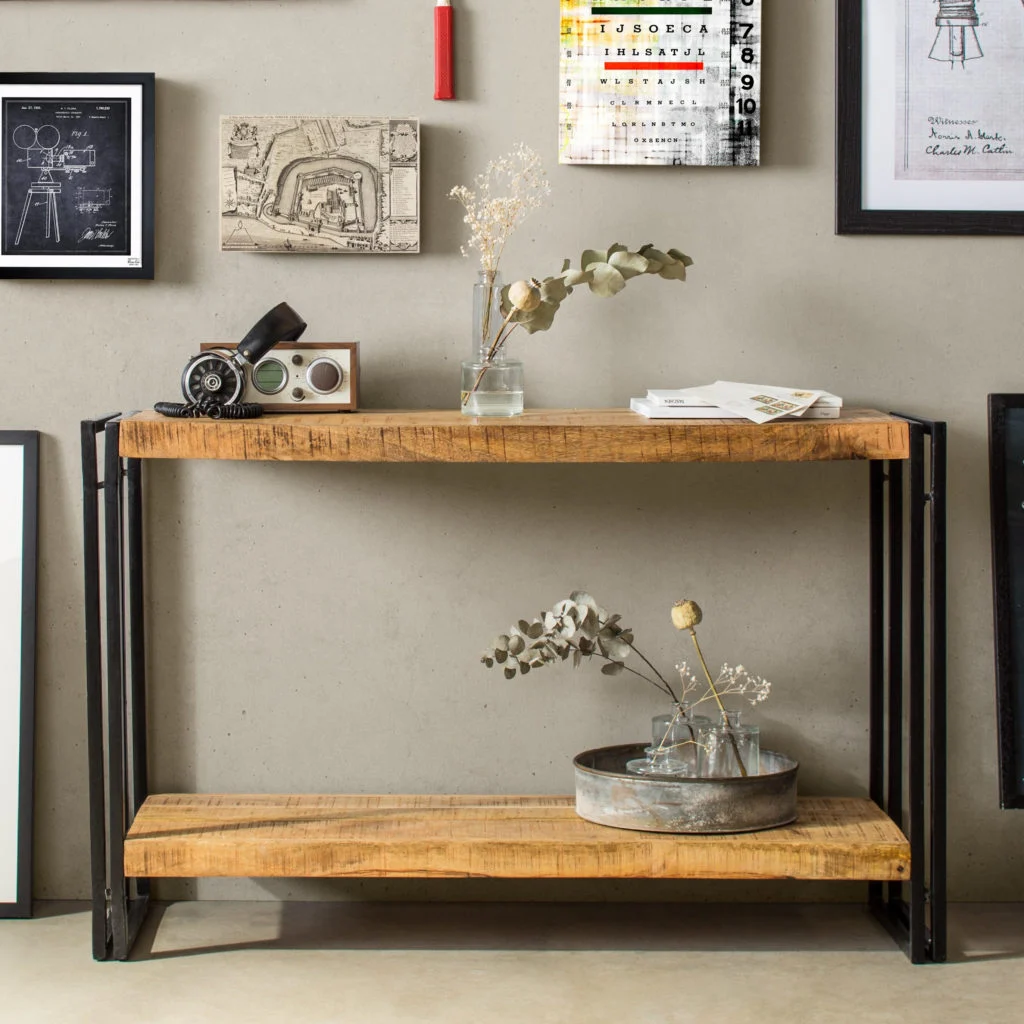
Rustic Console Tables
Drawing inspiration from countryside homes, rustic console tables are all about natural charm. Made from reclaimed wood or distressed finishes, they bring warmth and a sense of coziness. Accents like wrought iron or barn-style doors further amplify their pastoral appeal.
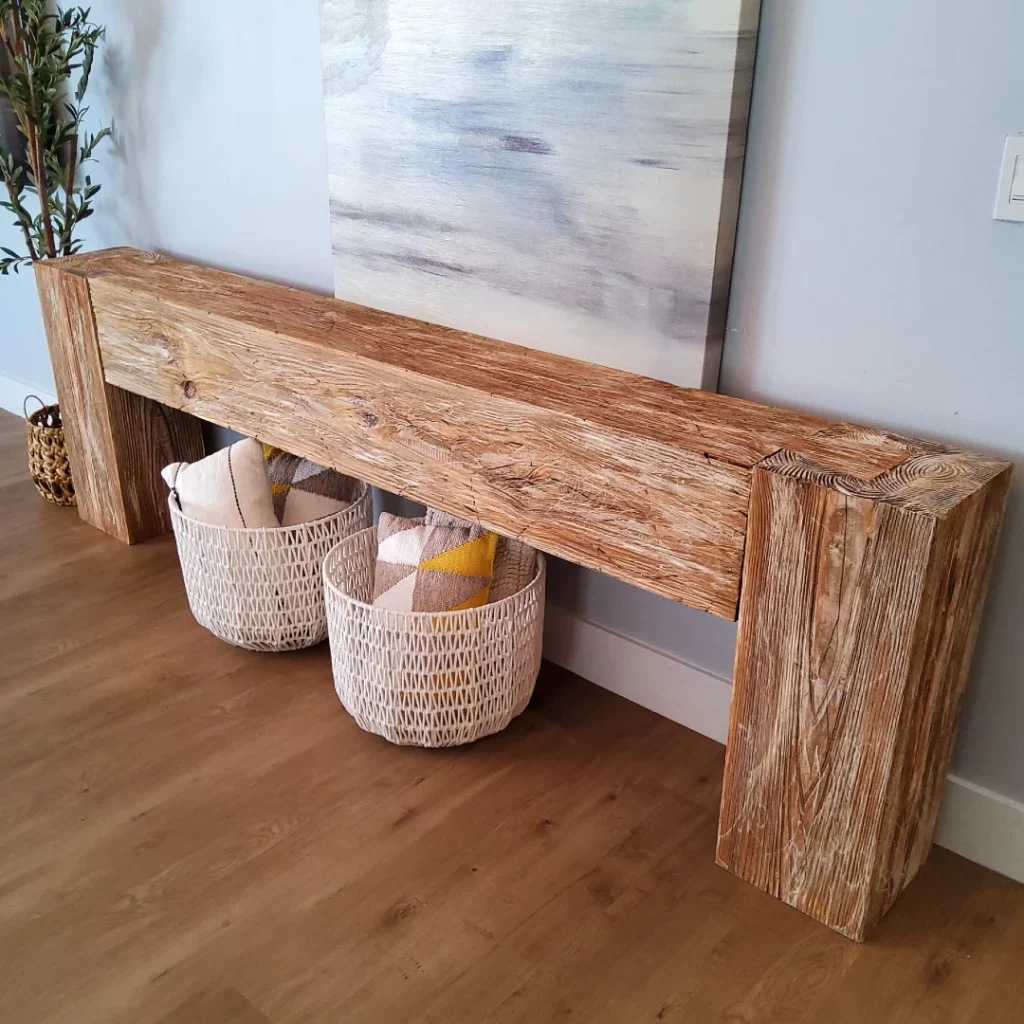
Choose the Right Material for your Console Table
The material of a console table does more than dictate its durability—it defines its character, dictates its maintenance, and determines how it complements its surroundings. Here’s an exploration of popular materials to guide your decision:
Wood Console Tables
- Types: Wood, as a versatile medium, offers a range of types each exuding its own charm. From robust oak and classic mahogany to light pinewood and exotic teak, the choices are vast.
- Finishes: Depending on the ambience one wishes to cultivate, wooden console tables can be polished for a glossy look, distressed for a rustic vibe, or stained to enhance their natural grain.
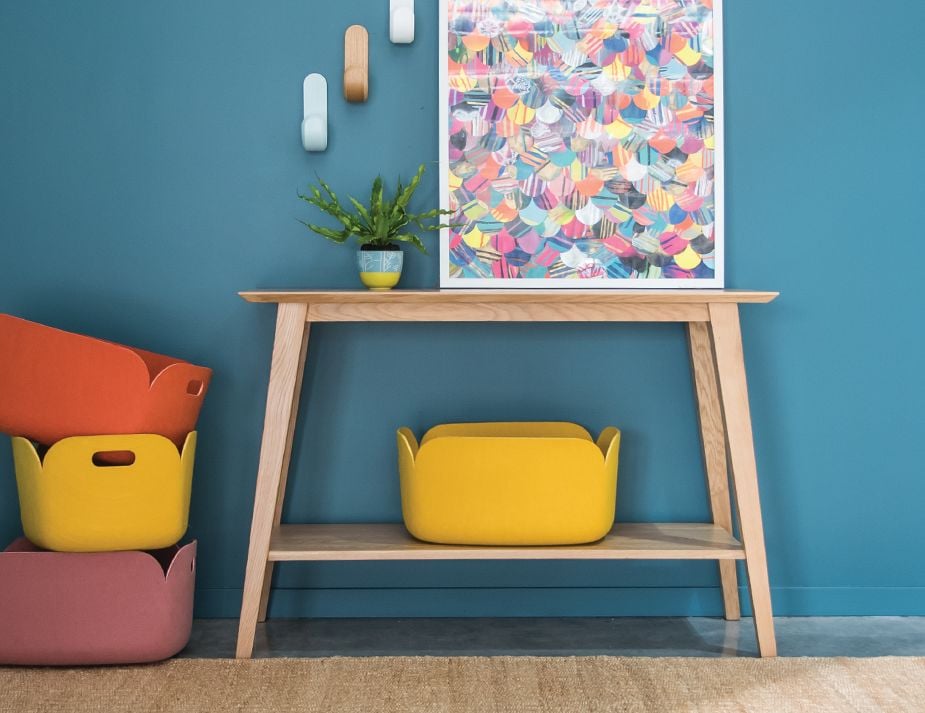
Metal Console Tables
- Types: Metals infuse a distinct aura into console tables. While steel offers a sleek, modern appeal, brass exudes vintage charm. Wrought iron, on the other hand, often finds its way into more intricate, ornate designs.
- Finishes: Metals can be polished for a shiny finish, powder-coated for colour, or even aged for a patinaed, antique look.
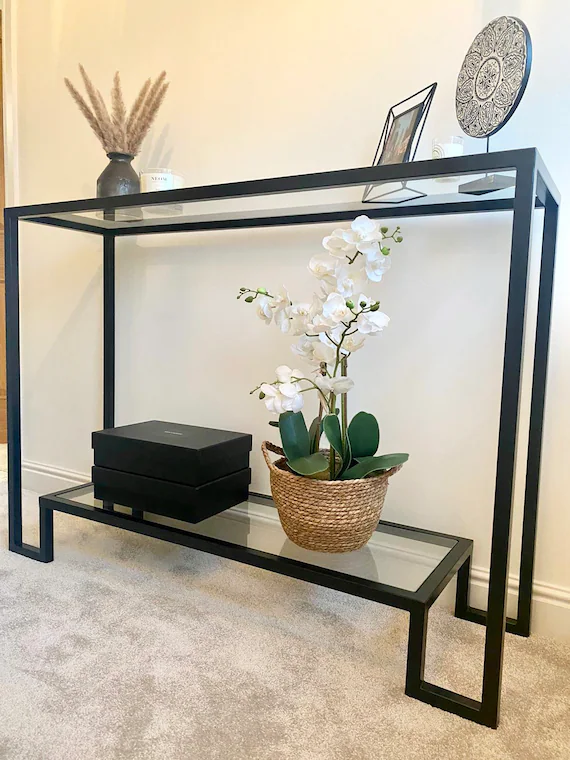
Glass Console Tables
- Types: Glass-topped console tables lend an air of elegance and spaciousness to interiors. Whether it’s clear glass for a transparent, open feel, frosted for a bit of opacity, or colour to make a statement, each has its unique appeal.
- Finishes: Edges can be bevelled for a decorative touch, or tempered to increase durability, ensuring both style and safety.
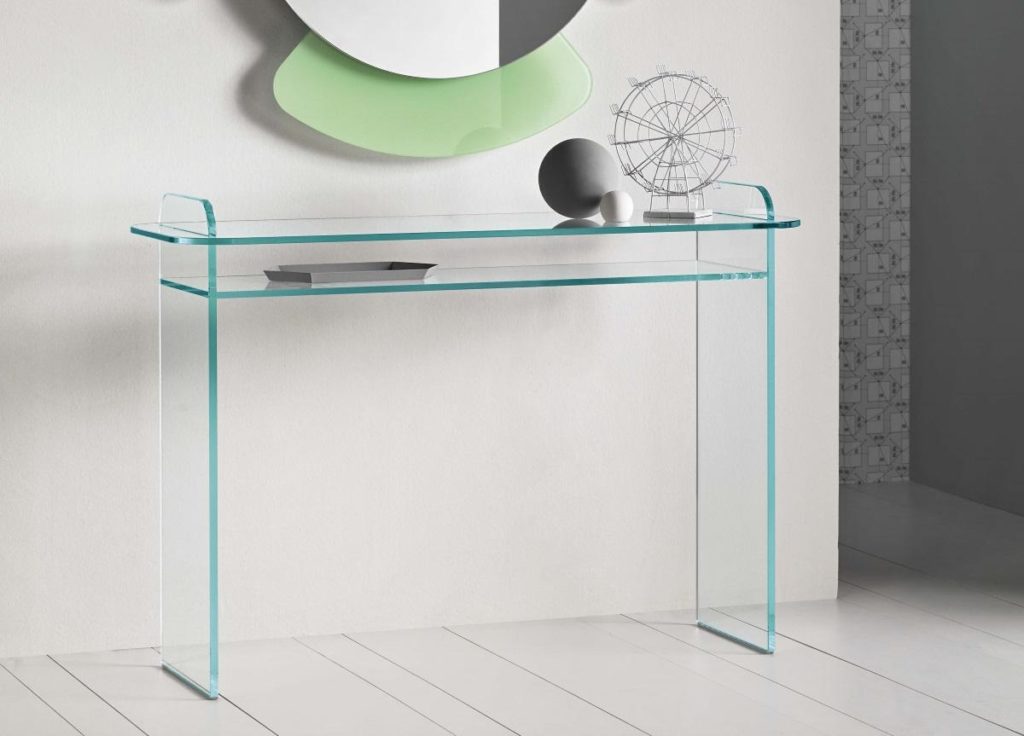
Mixed Materials
- Combining materials can result in truly captivating designs. Think of a wood console table with metal accents, or a metal table with a glass top. These hybrids not only stand out for their uniqueness but also offer the combined advantages of the materials they meld.
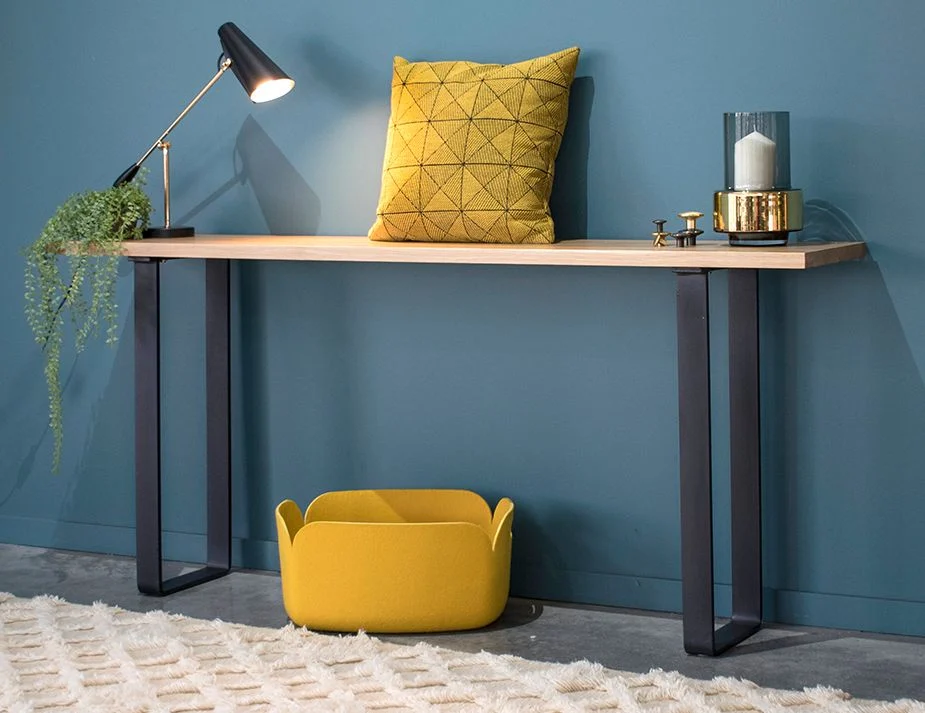
Console Table Placement: What to Consider for Your Home
How to choose a perfect console table goes beyond design and material. Size and placement play crucial roles in ensuring that the piece not only complements its surroundings but also serves its intended purpose efficiently. Here are vital considerations to bear in mind:
Measuring Your Space
- Precision is Key: Before diving into the world of console tables, it’s essential to measure the intended area. Understand the width, depth, and height that your space can accommodate. This will narrow down your choices and prevent the common pitfall of falling in love with a table only to realize it’s too large or too small.
- Traffic Flow: Ensure there’s enough space around the console, especially if it’s in a hallway or entryway. You don’t want it obstructing movement.
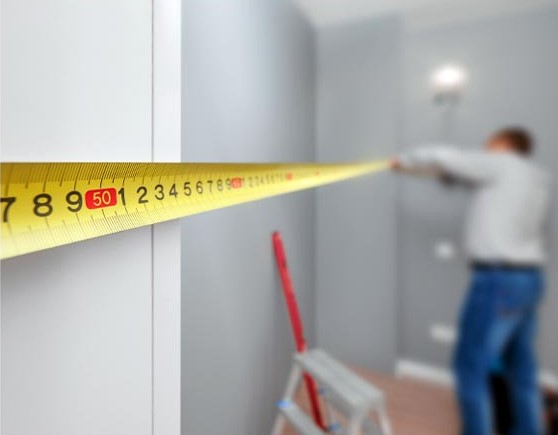
Wall-mounted vs. Freestanding
- Wall-mounted Consoles: These are affixed directly to the wall, giving an illusion of space due to their floating nature. They’re excellent for compact areas and offer a clean, contemporary look. They might, however, be limited in terms of weight-bearing capacity.
- Freestanding Consoles: These are traditional tables that stand on their legs. They offer flexibility as they can be moved around. They might also come with additional storage options like drawers or shelves, adding to their utility.
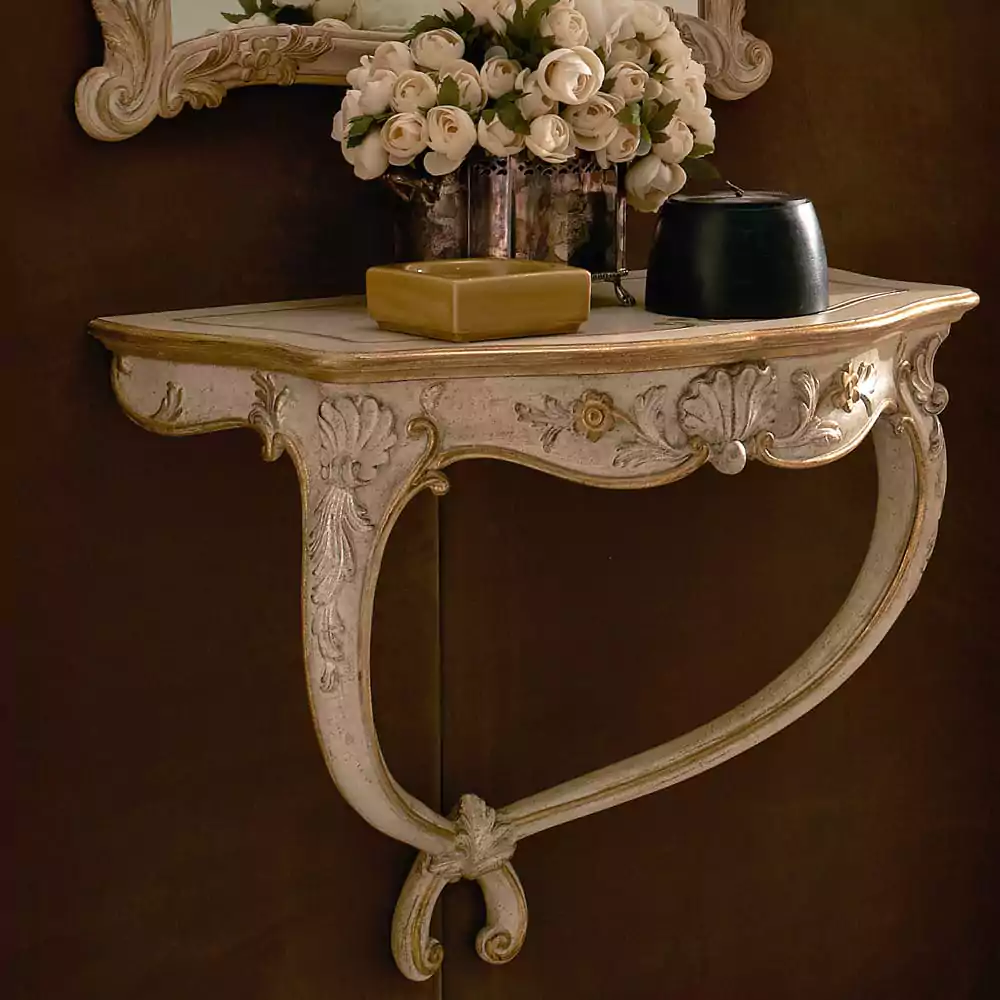
Storage Options and Features for Your Console Table
A Console table is not just about visual appeal; they’re about functionality too. Depending on your needs, they can serve as handy storage units, while also hosting a range of innovative features:
Drawers, Shelves, and Cabinets
Drawers: Perfect for stashing away items like keys, remotes, or mail, drawers keep the clutter out of sight, ensuring the surface remains neat.
Shelves: A great way to showcase decorative items or books, shelves add an open storage option, making the table look spacious.
Cabinets: For those seeking more concealed storage, some console tables come equipped with cabinets, ideal for larger items or things you’d prefer to keep out of sight.
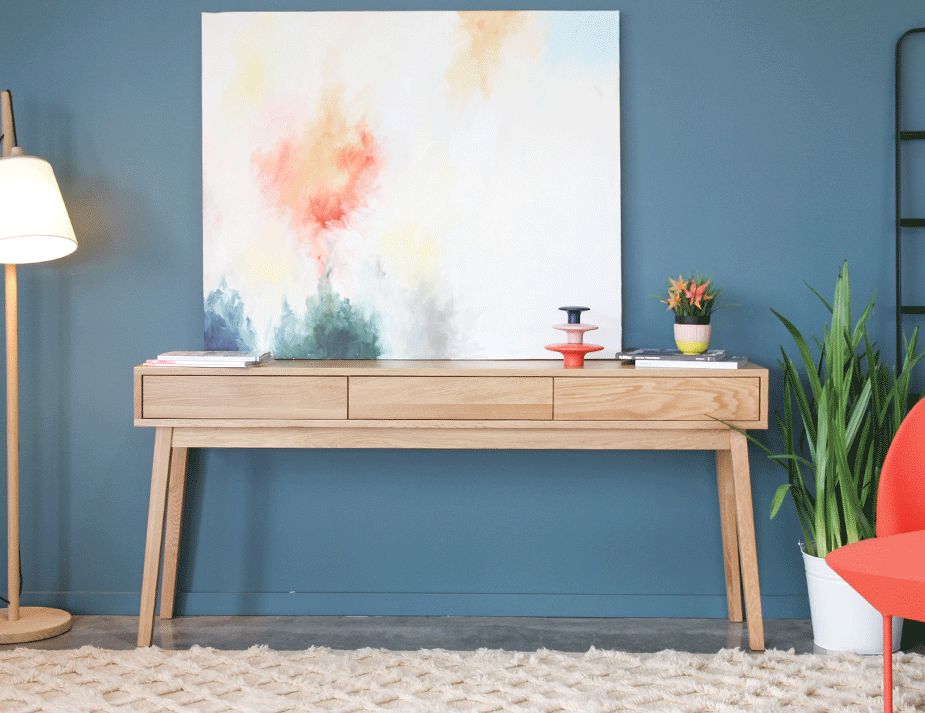
Special Features
Charging Ports: With tech becoming an integral part of our lives, some console tables now offer built-in charging ports, ensuring your devices are always powered up.
Drop Leaves: If you occasionally need more surface area, consider console tables with drop leaves. They can be expanded when required and folded back to save space.
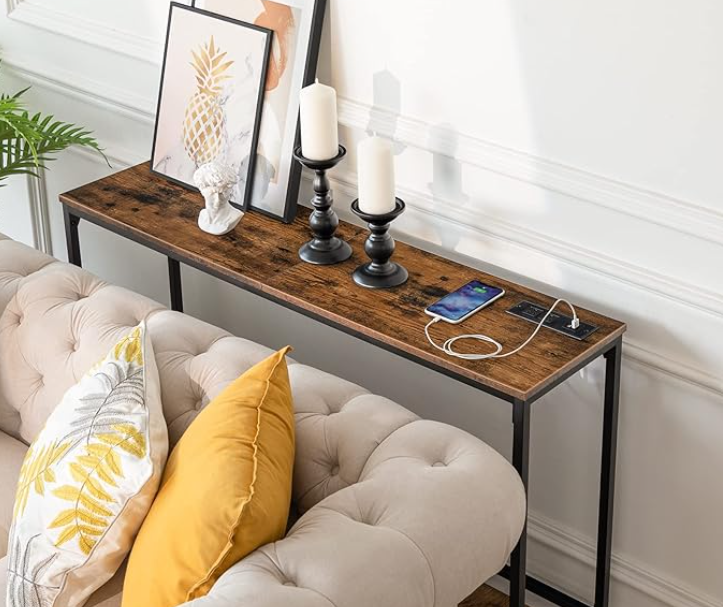
How to Style Your Console Table
Once you’ve chosen the perfect console table, it’s all about styling it to resonate with your personal taste and the overall theme of your space:
Vases: A tall vase with fresh or dried flowers can be a focal point, adding colour and life.
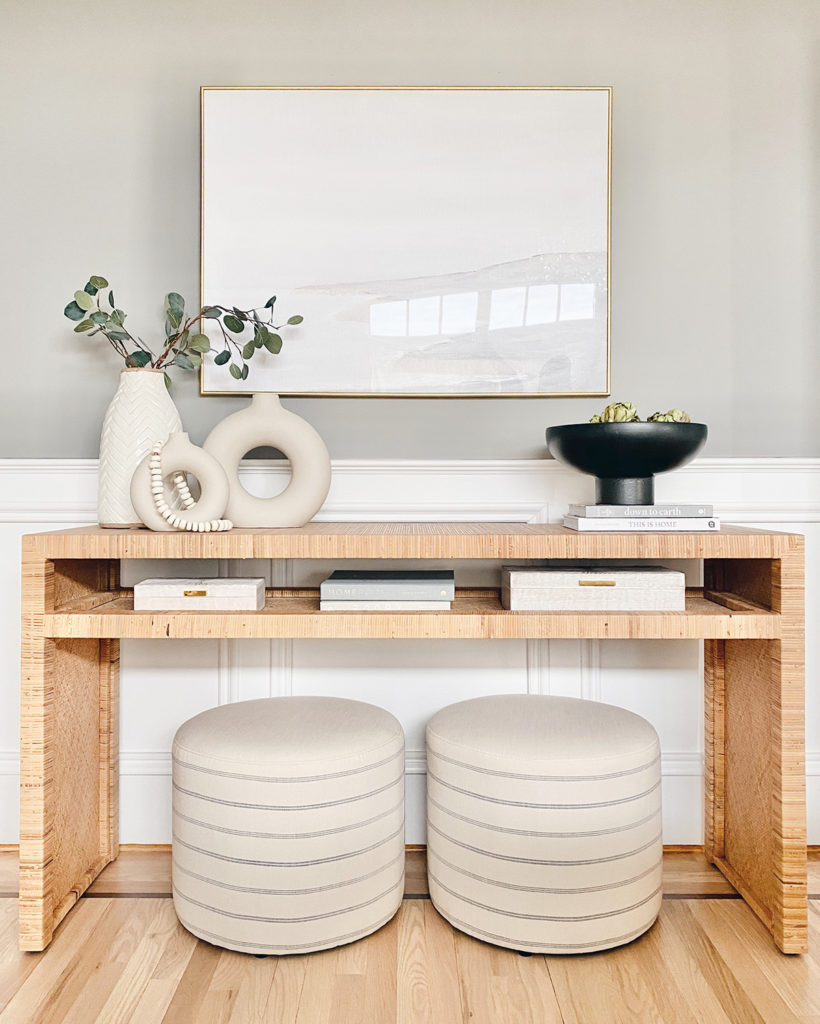
Books: A stack of aesthetically pleasing coffee table books not only looks chic but also offers guests a glimpse into your interests.
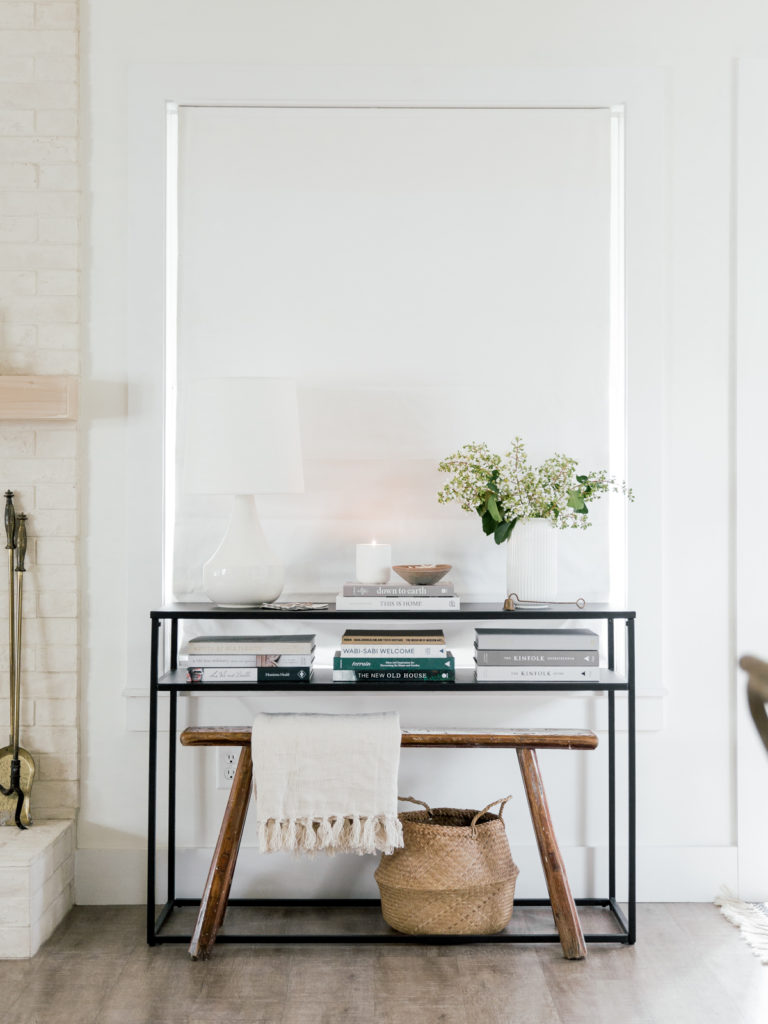
Lamps: Functional and decorative, lamps add warmth to the setup and can anchor the table in larger spaces.
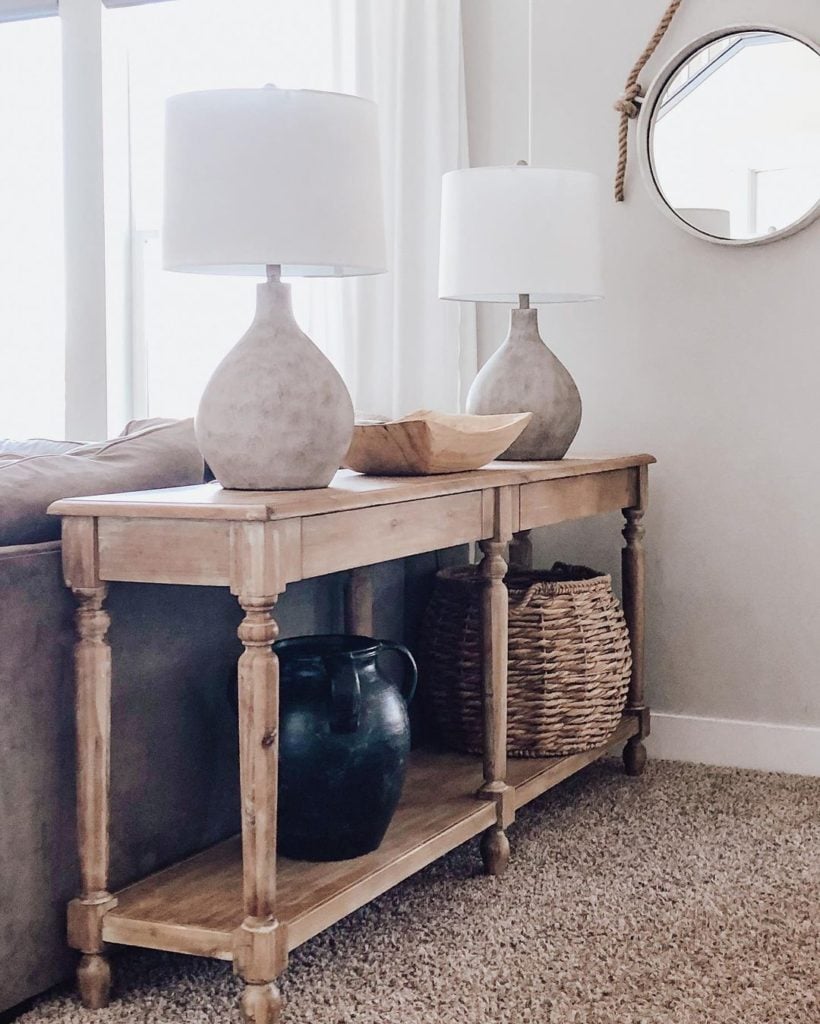
Festive Flair: Around the holidays, consider adding themed decorations like baubles or candles.

Ensuring Longevity and Shine for Your Console Table
Regular Dusting: Dust can dull the shine of your table over time. Regularly dust with a soft cloth to keep the surface sparkling.
Polishing: For wooden tables, using quality wood polish can bring out the lustre and protect the wood. Metal tables can be wiped with a damp cloth and occasionally polished to prevent tarnishing.
Glass Cleaning: If you have a glass console table, using a glass cleaner will keep it streak-free and clear.
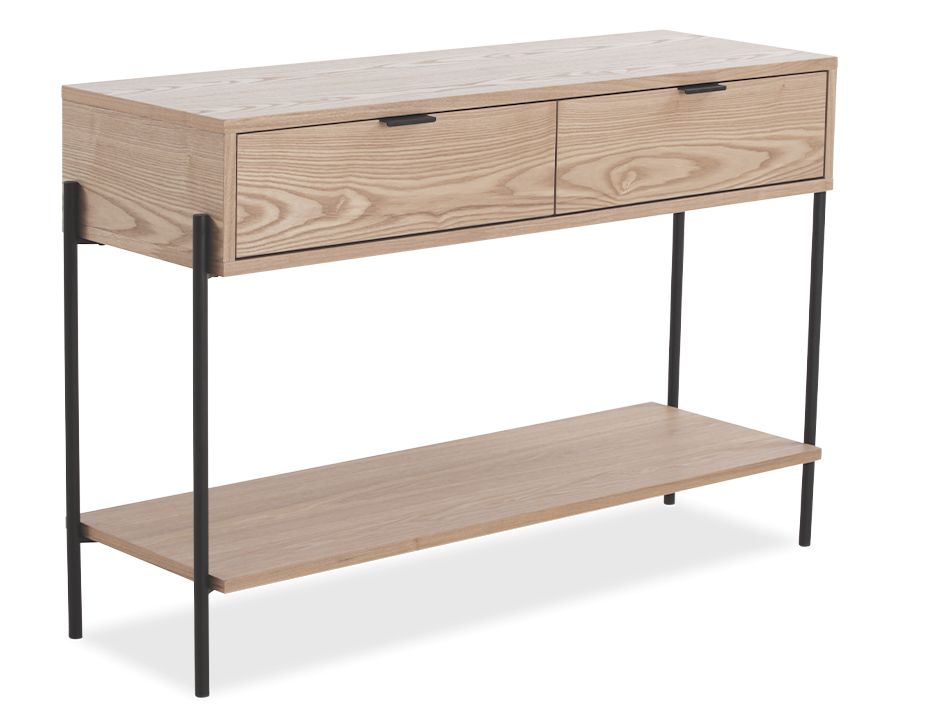
The Art of Choosing the Perfect Console Table
In the journey of interior decor, choosing a console table becomes an exercise in balancing aesthetics with functionality. It’s not merely about picking a piece that looks good, but one that fits seamlessly into your space, serves its purpose and stands the test of time.
As we’ve traversed the various facets of console tables—from their types, materials, and styling tips to their maintenance—it becomes evident that these tables are more than mere furniture. They’re pieces of art, storage units, workspaces, and, most importantly, an embodiment of personal taste.
So, as you set out to choose your console table, remember to let both your heart and mind guide you. Consider its functionality, but also its aesthetics, ensuring it resonates with the theme of your home and tells your unique story. Happy decorating!
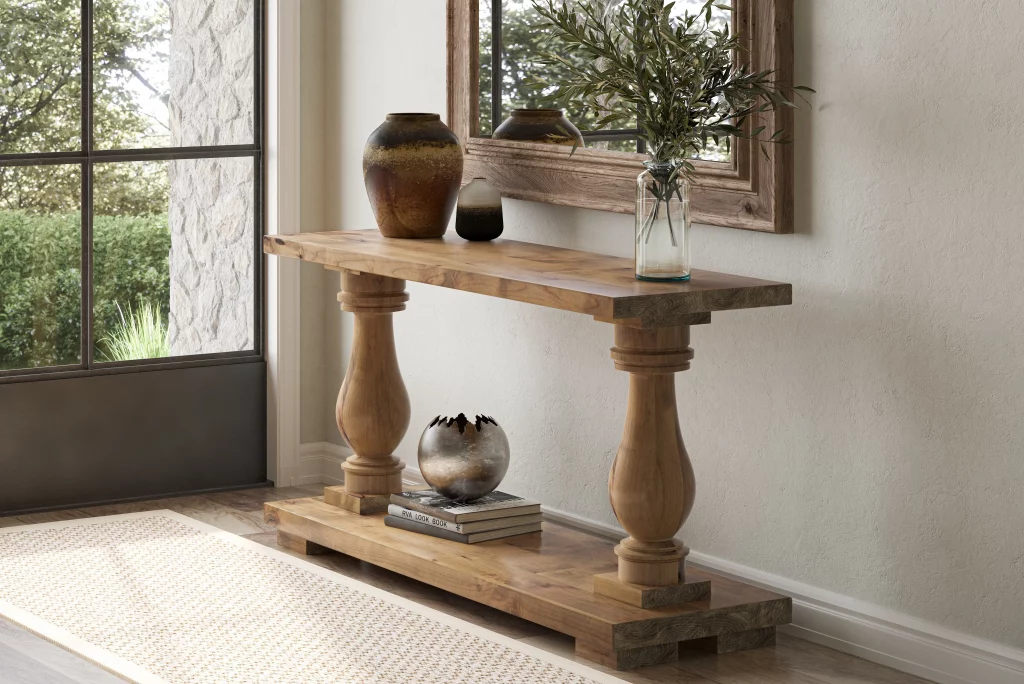
Frequently Asked Questions
Console tables come in various heights, and the choice depends on your preference and the table’s intended use. Some console tables have a standard height, while others may be taller or shorter. Consider the table’s functionality and how it fits into your space. A standard height is usually around 30 inches, but you can find shorter or taller options to suit your needs.
The size of the console table behind a couch depends on the sofa’s dimensions and the available space. A general guideline is that the table’s width should be no more than two-thirds the length of the sofa. The table’s height should align with or slightly below the sofa’s backrest for a visually cohesive look. Ensure there’s enough room for easy access and that the table doesn’t overpower the couch.
Accessorizing a console table involves adding decorative items that enhance its visual appeal. Start with a focal point, such as a piece of artwork or a mirror, and build around it. Add table lamps for ambient lighting, decorative vases or plants for a touch of nature, and smaller decor items like candles, sculptures, or books. Consider the room’s style and colour scheme when selecting accessories.
Arranging a console table behind a couch involves a mix of functionality and aesthetics. Place a table lamp or two on the table’s surface to provide ambient lighting. Add decorative items like artwork, candles, or plants to create visual interest. Consider using baskets or decorative boxes on the lower shelf for storage or display. Ensure the arrangement complements the room’s overall style and maintains balance.
Selecting the right size for your console table is crucial for both functionality and aesthetics. Measure the available space where you intend to place the table. Ideally, the table should be proportional to the wall or area it’s against. Consider the room’s scale and purpose; a smaller room might benefit from a narrower console table to avoid overcrowding, while a larger space can accommodate a broader one. Ensure there’s enough clearance around the table for easy movement.
